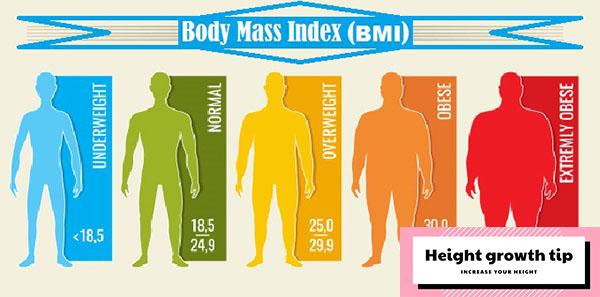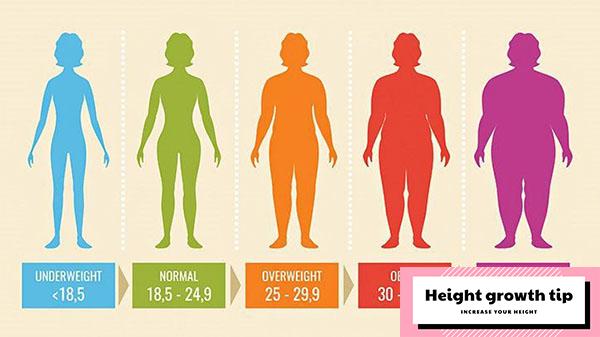Join us as we navigate through the nuances of precise measurement techniques, ensuring that each data point on these charts reflects the true essence of our child’s progress. Along the way, we’ll uncover the diverse array of factors shaping their growth trajectory – from genetics to nutrition, from environment to overall health.
Together, let’s delve into the heart of child development, armed with knowledge and equipped with the tools necessary to nurture thriving individuals. This journey isn’t just about numbers; it’s about empowering ourselves as guardians to cultivate the best possible outcomes for our children’s futures.
Exploring the Complexities of Growth: A Comprehensive Analysis
The process of a child’s growth is a rich tapestry woven together by a multitude of intricate influences. Genetics, as a powerful force, passes down height and body structure traits from generation to generation. However, it shares the spotlight with environmental factors, such as nutrition, physical activity, and overall well-being, all of which play a significant role in shaping the growth journey. A deeper understanding of these multifaceted factors empowers parents to make well-informed choices that nurture the healthy development of their children.
Unveiling the Patterns of Development
The growth trajectory of children follows a unique and nuanced pattern, characterized by periods of rapid expansion at different stages of life. Infants and toddlers experience a whirlwind of growth during their early years, but this pace gradually tapers off during the preschool phase. As children enter school age, growth continues at a more steady rate, only to undergo another significant surge during adolescence. It’s important to note that these growth patterns are not one-size-fits-all; they vary between genders, demanding a comprehensive understanding to accurately interpret height and weight charts.
The Crucial Role of Puberty and Growth Spurts
Puberty stands as a pivotal milestone, marking the transition from childhood to adolescence. The hormonal changes that occur during puberty trigger growth spurts, leading to substantial gains in both height and weight. The timing and duration of these growth spurts differ between boys and girls, adding a layer of complexity to the growth equation. Height and weight charts become invaluable tools for deciphering the anticipated growth trends during these transformative adolescent years.
In Summary, Insight into Growth Trajectories is Key
Gaining insight into the intricate pathways of children’s growth is essential for parents and caregivers. Height and weight, serving as vital indicators, offer valuable glimpses into a child’s development and overall health. The use of age-specific height and weight charts equips us with the knowledge needed to make informed assessments and decisions concerning a child’s growth journey.
The Importance of Height and Weight Monitoring
Regularly tracking a child’s height and weight holds paramount significance, serving a multitude of crucial purposes. It plays a pivotal role in the early detection of potential growth-related issues, whether it involves stunted growth or excessive weight gain. By comparing these measurements to age-specific height and weight charts, parents and healthcare professionals can promptly identify any concerns and take appropriate actions when necessary. Moreover, this vigilant monitoring provides reassurance that a child’s development is on a healthy and positive trajectory.
Guaranteeing Precision in the Assessment of Children’s Height and Weight
Accurate measurements of a child’s height and weight are of utmost importance when it comes to effectively tracking their growth and development. To ensure the utmost precision in these measurements, it is imperative to adhere to the following meticulous guidelines:
Measuring Height
- Correct Positioning: Commence by positioning the child against a wall, making certain that their feet are firmly planted on the floor, and their posture remains perfectly upright.
- Head Alignment: Gently place a flat object, such as a book, atop the child’s head to maintain a level position.
- Employ the Right Tool: Utilize a measuring tape or ruler designed for this purpose. Initiate the measurement from the floor and extend it up to the highest point of the child’s head, ensuring that the measuring tool remains absolutely straight and parallel to the wall.
- Document the Measurement: Carefully record the height measurement, whether in centimeters or inches, according to your chosen unit of measurement.
Measuring Weight
- Ensure a Stable Surface: Position the weighing scale on a stable and even surface to obtain precise weight readings.
- Clothing Adjustment: Prior to stepping onto the scale, instruct the child to remove any heavy clothing or footwear that could potentially impact the measurement.
- Measurement Procedure: Direct the child to step onto the scale and remain perfectly still until the measurement stabilizes.
- Record the Weight: Diligently note down the weight, whether in kilograms or pounds, as per your preferred unit of measurement.
By meticulously adhering to these precise measurement techniques, you can acquire dependable data for accurately monitoring a child’s growth and development.
Chart of Height and Weight for Boys Across Different Age Groups
Infants and Toddlers
During the initial year of life, boys undergo rapid growth, achieving an average length gain of 25-30 cm (10-12 inches). Below, you’ll find a comprehensive height and weight range for infants and toddlers:
Age: 0-3 months
- Average height: 50-64 cm (20-25 inches)
- Average weight: 3-7 kg (7-15 pounds)
Age: 3-6 months
- Average height: 62-72 cm (24-28 inches)
- Average weight: 6-9 kg (14-20 pounds)
Age: 6-9 months
- Average height: 68-77 cm (27-30 inches)
- Average weight: 8-11 kg (18-24 pounds)
Age: 9-12 months
- Average height: 72-82 cm (28-32 inches)
- Average weight: 9-12 kg (20-26 pounds)
Preschool Age
Throughout the preschool age, spanning from 3 to 5 years, boys continue their steady growth. Presented below are the height and weight guidelines for this developmental stage:
Age: 3 years
- Average height: 90-100 cm (35-39 inches)
- Average weight: 13-16 kg (29-35 pounds)
Age: 4 years
- Average height: 95-110 cm (37-43 inches)
- Average weight: 15-18 kg (33-40 pounds)
Age: 5 years
- Average height: 100-115 cm (39-45 inches)
- Average weight: 17-20 kg (37-44 pounds)
School Age
During the school-age years, from 6 to 12 years old, growth occurs at a more gradual pace. Below are the height and weight parameters for boys in this age group:
Age: 6 years
- Average height: 110-120 cm (43-47 inches)
- Average weight: 18-23 kg (40-51 pounds)
Age: 8 years
- Average height: 120-130 cm (47-51 inches)
- Average weight: 22-28 kg (49-62 pounds)
Age: 10 years
- Average height: 130-140 cm (51-55 inches)
- Average weight: 27-37 kg (60-82 pounds)
Age: 12 years
- Average height: 140-150 cm (55-59 inches)
- Average weight: 35-50 kg (77-110 pounds)
Adolescence
During adolescence, boys undergo significant growth spurts. The following height and weight range outlines the typical development for boys during this phase:
Age: 14 years
- Average height: 150-165 cm (59-65 inches)
- Average weight: 45-65 kg (99-143 pounds)
Age: 16 years
- Average height: 165-175 cm (65-69 inches)
- Average weight: 55-70 kg (121-154 pounds)
Age: 18 years
- Average height: 170-180 cm (67-71 inches)
- Average weight: 60-75 kg (132-165 pounds)
This comprehensive chart provides valuable insights into the growth and development of boys at different stages of their lives.
Height and Weight Chart by Age for Girls
Infants and Toddlers
During the first year, girls also experience rapid growth. Here’s a general height and weight range for girls:
- Age: 0-3 months
- Average height: 49-63 cm (19-25 inches)
- Average weight: 3-7 kg (7-15 pounds)
- Age: 3-6 months
- Average height: 60-70 cm (24-28 inches)
- Average weight: 5-8 kg (11-18 pounds)
- Age: 6-9 months
- Average height: 66-75 cm (26-30 inches)
- Average weight: 7-10 kg (15-22 pounds)
- Age: 9-12 months
- Average height: 70-80 cm (28-32 inches)
- Average weight: 8-11 kg (18-24 pounds)
Preschool Age
During the preschool age (3-5 years), girls continue to grow steadily. Here’s a general height and weight range for this stage:
- Age: 3 years
- Average height: 89-105 cm (35-41 inches)
- Average weight: 12-16 kg (26-35 pounds)
- Age: 4 years
- Average height: 95-110 cm (37-43 inches)
- Average weight: 14-18 kg (31-40 pounds)
- Age: 5 years
- Average height: 100-115 cm (39-45 inches)
- Average weight: 16-21 kg (35-46 pounds)
School Age
During the school-age years (6-12 years), girls experience gradual growth. Here’s a general height and weight range for girls in this age group:
- Age: 6 years
- Average height: 110-120 cm (43-47 inches)
- Average weight: 17-22 kg (37-49 pounds)
- Age: 8 years
- Average height: 120-130 cm (47-51 inches)
- Average weight: 20-27 kg (44-60 pounds)
- Age: 10 years
- Average height: 130-140 cm (51-55 inches)
- Average weight: 25-37 kg (55-82 pounds)
- Age: 12 years
- Average height: 140-150 cm (55-59 inches)
- Average weight: 32-48 kg (71-106 pounds)
Adolescence
During adolescence, girls also experience growth spurts. Here’s a general height and weight range for girls during this stage:
- Age: 14 years
- Average height: 150-160 cm (59-63 inches)
- Average weight: 40-60 kg (88-132 pounds)
- Age: 16 years
- Average height: 155-165 cm (61-65 inches)
- Average weight: 45-65 kg (99-143 pounds)
- Age: 18 years
- Average height: 160-170 cm (63-67 inches)
- Average weight: 50-70 kg (110-154 pounds)
Navigating the Complexity of Children’s Growth Charts: Understanding the Nuances
The age-based height and weight chart serves as a valuable tool for assessing a child’s growth, yet it is crucial to delve deeper into its intricacies. This chart offers average ranges that encompass the majority of children, but it is imperative to acknowledge that each child possesses a unique growth journey, one that may deviate significantly from the norm. Rather than regarding the chart as an absolute benchmark, it should be perceived as a general guideline.
When utilizing the height and weight chart, one must consider not only a child’s age but also their gender and individual growth patterns. The presence of consistent deviations in a child’s measurements from the chart should prompt consultation with a healthcare professional to investigate potential underlying health issues.
Influential Factors Contributing to Variations in Height and Weight
Several factors contribute to the wide spectrum of height and weight observed among children. To decode the intricacies of the height and weight chart, it is essential to take these factors into account:
Genetics:
Genetics play a significant role in shaping a child’s height and body structure. Inherited traits passed down from parents contribute to unique growth patterns.
Nutrition:
Adequate nutrition is paramount for wholesome growth and development. A well-balanced diet, rich in essential nutrients such as proteins, vitamins, and minerals, supports optimal growth. Inadequate or imbalanced nutrition can have adverse effects on a child’s height and weight.
Physical Activity:
Regular physical activity and exercise are pivotal for overall growth and development. Engaging in physical activities promotes bone health, muscle development, and overall fitness, which, in turn, influence height and weight.
Health Conditions:
Certain health conditions can hinder a child’s growth. Hormonal imbalances, chronic illnesses, or underlying medical issues may affect height and weight trajectories. Consulting with a healthcare professional is prudent when concerns related to growth arise.
By considering these multifaceted aspects, one can gain a more profound understanding of the height and weight chart, leading to a comprehensive grasp of a child’s growth dynamics.
Fostering Optimal Growth and Development
To facilitate the wholesome growth and development of children, consider the following measures:
- Balanced Nutrition: Provide a diet that is rich in diversity, encompassing fruits, vegetables, whole grains, lean proteins, and dairy products. A well-rounded nutritional intake ensures the necessary building blocks for growth.
- Physical Activity Promotion: Advocate for regular physical engagement and minimize sedentary activities, such as excessive screen time. Physical activity enhances bone strength, muscle development, and overall vitality.
- Adequate Sleep: Prioritize sufficient sleep for proper rest and optimal growth. Restorative sleep is instrumental in supporting a child’s growth trajectory.
- Regular Health Check-ups: Schedule periodic appointments with healthcare experts to track growth patterns and address any potential concerns in a timely manner.
- Supportive Environment: Cultivate a nurturing atmosphere that bolsters emotional well-being. A supportive environment contributes to holistic development.
By centering efforts on these factors, parents and caregivers can aid children in realizing their utmost potential in terms of height and weight, all the while nurturing their comprehensive wellness.
How to calculate BMI?
BMI, or body mass index, is one of the most popular methods of measuring a person’s weight for their height. Then it will characterize your BMI as normal, underweight, overweight or obese.

Max Body Index Calculator
Take a look at this formula [2]:
- Check your weight in pounds
- Multiply by 703
- Divide the result by your height (in inches)
- Continue dividing the result by your height in inches again.
Here’s an example. Someone who weighs 150 pounds and is 5 feet 4 inches (approximately 64 inches) tall, then the calculation is as follows:
- 150 x 703 = 105,450
- 105,450 / 64 = 1,647.65
- 1,647.65 / 64 = 25.74
So, what does this number mean? Keep scrolling to find out!
Body index max category
| BMI | CATEGORY |
| Under 18.5 | Underweight |
| 18.5 to 24.9 | Healthy |
| 25.0 to 29.9 | Obesity |
| 30.0 to 39.9 | Fat |
| Over 40 | Extreme obesity or high risk |
Back to the number above! If we round to the nearest decimal place, this person’s BMI is 25.8 and overweight.
Strategies for Maintaining Optimal Height and Weight
The path to achieving and maintaining ideal weight and height involves adopting an integrated approach that encompasses diet, exercise, and lifestyle adjustments. If you’re committed to attaining the healthy body you’ve always aspired to, here’s an indispensable roadmap to consider:
Embrace a Balanced Diet:
Nourishing your body with vital nutrients is fundamental for seamless functioning. Construct your diet to encompass all essential food groups in appropriate proportions.
Vitamins and Minerals: These protective agents regulate metabolism and thwart infections. Integrate fruits and vegetables into your diet, as they are reservoirs of these crucial nutrients.
Protein: A pivotal component for weight management and maintaining a wholesome body composition. Introduce whole grains, milk, eggs, legumes, fish, meat, and lentils into your daily meals to fulfill your protein requisites.
Carbohydrates: Serve as fuel for beneficial gut bacteria and foster growth. Opt for high-carbohydrate foods like brown rice, oats, potatoes, and quinoa.
Fats: Vital for energy provision, hormone synthesis, and vitamin absorption. Integrate healthful fats rich in unsaturated fatty acids, like fish oil, sunflower oil, seeds, and nuts, into your dietary regimen.
Engage in Regular Exercise:
Striking a balance between calorie intake and expenditure necessitates consistent physical activity indoors and outdoors.
For Adults: Integrate exercise into your daily routine, be it jogging, walking, or gym sessions.
For Children: Cultivate a penchant for outdoor activities and impart the significance of physical engagement. Outdoor games, running, horse riding, swimming, and yoga are fantastic avenues to maintain their activeness.
Prioritize Adequate Sleep:
Insufficient sleep can contribute to weight gain. Sleep deprivation may prompt increased eating to stay awake. Prioritize obtaining ample sleep nightly to enable your body’s optimal function and rejuvenation. Additionally, sleep triggers the production of growth hormone, crucial for overall health and growth.

Bid Farewell to Stimulants
Steering clear of stimulants such as alcohol, caffeine, and nicotine is crucial for adults, as they have the potential to hinder the absorption of essential nutrients in the body. Developing an addiction to these substances can have unfavorable effects on one’s physical growth, overall health, and well-being. It is imperative to abstain from their use and instead focus on fostering a health-conscious lifestyle.
Mindful Weight Management
Maintaining a healthy weight is of utmost importance, as excess weight can lead to a multitude of health complications. Additionally, carrying extra weight can put undue stress on joints and bones, potentially affecting your height. To achieve and maintain an optimal body weight, emphasize the importance of a well-balanced diet and engage in regular physical activity.
Embrace the Radiance of Sunlight
Vitamin D plays a pivotal role in calcium metabolism and bone growth. Sunlight is the most abundant natural source of this essential vitamin. It is advisable to expose your skin to sunlight for approximately 5 to 15 minutes, 2 to 3 times a week, to ensure you have an adequate level of vitamin D.
Nurture a Positive Outlook
Stress is an inherent part of life, regardless of age. While short-term stress is generally manageable, prolonged stress, especially during puberty, can have detrimental effects. Elevated cortisol levels resulting from chronic stress can disrupt the communication between the brain and the pituitary gland, leading to reduced production of growth hormone, which is essential for comprehensive growth. Therefore, effective stress management and maintaining a positive outlook are vital.
Avoid Constrictive Clothing
While wearing snug clothing during physical activity is acceptable, wearing tight clothing during sleep can lead to negative outcomes. Overly tight garments, like tight jeans, can exert pressure on thigh nerves, causing sensations of pain, numbness, and tenderness. Constrictive clothing may also trigger calf muscle cramps and impede arterial blood flow.
Monitor Your Sugar Intake
Sugars found in candies, cookies, and sugary treats provide empty calories devoid of nutritional value. Excessive sugar consumption can stimulate the release of inhibitory hormones that impede bone growth and overall development. Furthermore, it contributes to rapid weight gain, and obesity places additional stress on bones, potentially hampering height growth.

Avoid Excessive Salt Consumption
While salt is essential for the body’s proper functioning, excessive intake can lead to calcium depletion, edema, and high blood pressure, all of which can hinder holistic growth and development. Striking the right balance in your salt intake is crucial for maintaining overall health.
Steer Clear of Carbonated Beverages
Carbonated drinks contain air bubbles that increase urinary calcium excretion. Prolonged consumption of these beverages can potentially result in calcium deficiency, negatively impacting height growth and increasing the risk of joint and bone issues. Additionally, the high sugar content in carbonated beverages takes up valuable stomach space, limiting the absorption of essential nutrients.
Use Dietary Supplements Wisely
The market is flooded with various growth supplements containing ingredients like calcium, vitamin D, magnesium, and zinc, all aimed at enhancing height. Some supplements even include herbal components that boost immune health and improve sleep quality. However, it’s crucial to approach dietary supplements judiciously and seek guidance from a healthcare professional to ensure optimal nutrient absorption and avoid potential risks.
Recognize the Relationship Between Height and Weight
Height and weight are interconnected metrics that reflect overall health and development. By incorporating the advice and knowledge shared in this article, you can navigate your journey towards achieving and maintaining a strong, well-rounded physique. Your choices regarding nutrition and lifestyle play a significant role in shaping your overall health and growth.

